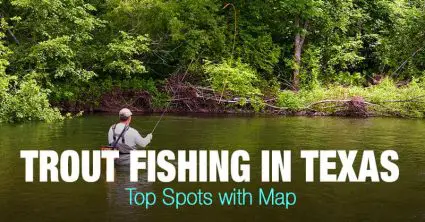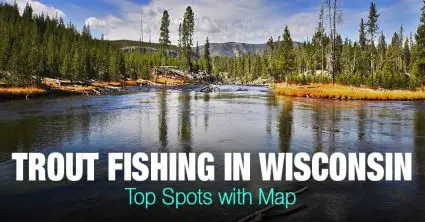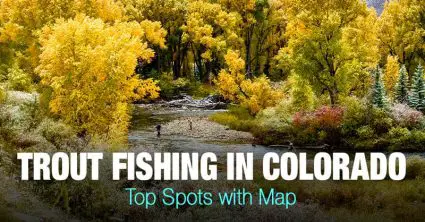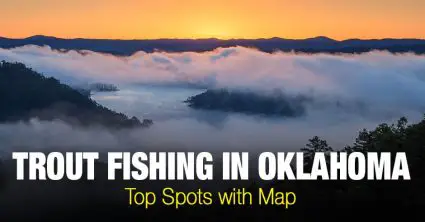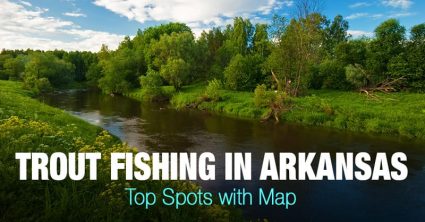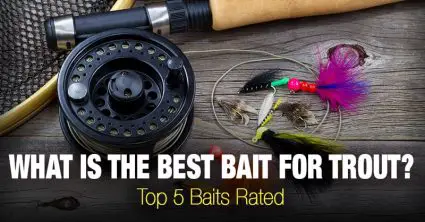You are looking for the most useful trout fishing tips, you’ve come to the right place.
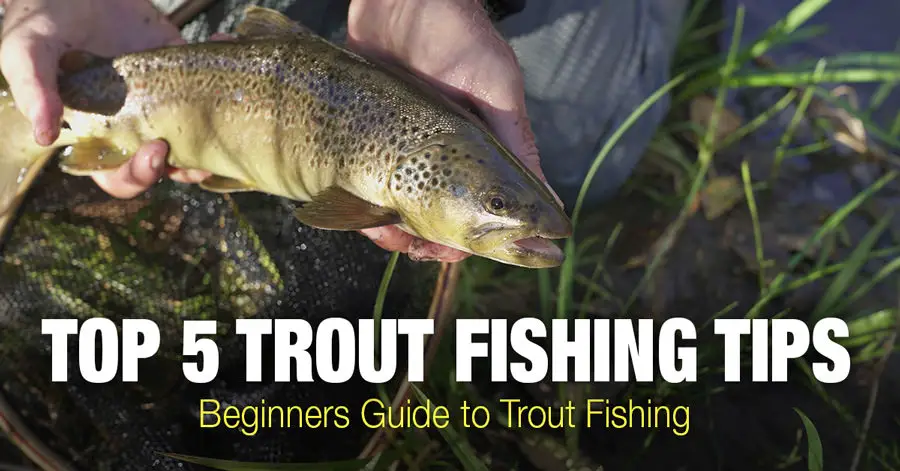
Ask an angler what their top favorite fish to catch are, and trout are guaranteed to be in their line up. Trout fishing is so popular because they love to fight, live in some of the most beautiful settings, are very plentiful, and they taste amazing. What’s not to love?
I love fishing for trout, and have been catching these beautiful fish ever since I was a child. After fishing for them for some time, you will start to notice what works and what doesn’t. Trout can be very finicky and spook easily at times, while at other times be the easiest fish to catch, making them a great quarry for beginners and experienced anglers alike.
While trout fishing can be very simple, it can be a bit overwhelming at times. Here are a few tips and tricks that I have learned over the years to help you catch fish a little more consistently and have even more fun while doing it!
My Top Trout Fishing Tips
Here is the list of my favorite trout fishing tips:
1. Trout Fishing Tackle
Before heading out on the water, you will need some basic tools to get started. Trout fishing gear is very simple, and like any other hobby, you can spend as much or as little as you want. While most people will tell you to spend as much as you can afford, a basic setup for a beginner can be set up for around $60 or less.
2. Trout Fishing Rod
One of the most important parts to any fishing setup, a basic rod will be something that is lightweight and a light to medium action. With various brands and qualities around, you can easily find one to fit your style and budget.
I do not recommend anything over 6 feet in length, as the longer a rod is the harder it is to control. Trout also live in smaller water, and you do not necessarily need to cast super far when fishing a small stream or river. Whatever length you decide on, try and get the highest quality material you can get, such as graphite or composite.
3. Trout Fishing Reel
A good, basic trout fishing reel will be lightweight and strong. There are a few different types of reels out there, but for a beginner, I would suggest a good spinning reel. These will be the most versatile type and last you for years to come.
There are many different types and brands of reels on the market, but as long as you stick with an all metal reel you will be just fine. A lightweight to medium action will do just fine for catching everything from small to large trout.
4. Trout Bait and Lures
When it comes to catching trout, what you are using on the end of your hook will affect your success more than anything. I recommend doing a little research about the body of water where you will be fishing and what types of bait or lures are catching fish, as every location can differ. It is also smart to have a good variety available in your tackle box in order to have different options.
Some popular live bait options include the famous worms, crickets, mealworms, and grasshoppers. When in doubt, look to see what is around while fishing. Once when fishing a small stream, I could not catch a single fish no matter how hard I tried. I then caught a small grasshopper on the waters’ edge, and within minutes landed a nice fish. Do not be afraid of trying different baits, as the trout can at times be picky eaters.
Many trout can also be caught using artificial lures, such as flies, spinners, and jigs. These types of lures are made to imitate a trout’s usual prey. I prefer using these types of lures in moving water, as the trout will not have as much time to see and react to your bait, and instead will strike it to avoid losing a meal.
5. Where to Fish for Trout
From deep water to small mountain streams, trout can be found in many different waters all around the world. Sitting on the edge of a lake or a river while watching a bobber float up and down is the icon image of trout fishing. There are healthy populations of both wild and stocked trout in waters all across the country, waiting to be fished.
Lakes and reservoirs provide a great and relaxing location to fish for trout. Most lakes and reservoirs will be easily accessible and have plenty of shorelines to fish from. In many lakes, trout will feed near the surface during dawn and dusk hours, making them easier targets.
If a lake or reservoir has a stream or river flowing into it, these are great spots to fish at. These types of areas concentrate trout activity, as they will sit and wait for food that flows into the lake. I love these types of areas, and consistently catch the most fish at these inlets.
For most trout species, however, moving water in streams and rivers are their preferred habitat. Not only do they thrive in clear, moving water, but the scenery alone is usually worth the trip. Trout fishing in a river or stream can present its own set of challenges and techniques as well.
When I fish in a river, I will look for pools and swirls in the water that trout will hang out at. Much like at a lake with a river flowing into it, trout will also hang out behind fast flowing water waiting for an easy meal. Finding these types of areas are key to catching trout in streams and rivers.
Conclusion
Trout fishing remains one of the most popular forms of fishing, and more and more people are drawn to it every fishing season. Whether they are out there catching trout for the table fare, the sport of it all, or simply for the peace and beauty that comes with it, trout fishing has something for every angler.
Most anglers will have some trout waters somewhere nearby, and most are easily accessible. Armed with a little bit of knowledge and some basic gear, there really is no excuse not to dive in and start trout fishing. Be careful though, it is very addicting once you get started! So get outside, find some beautiful trout water, and have fun.

